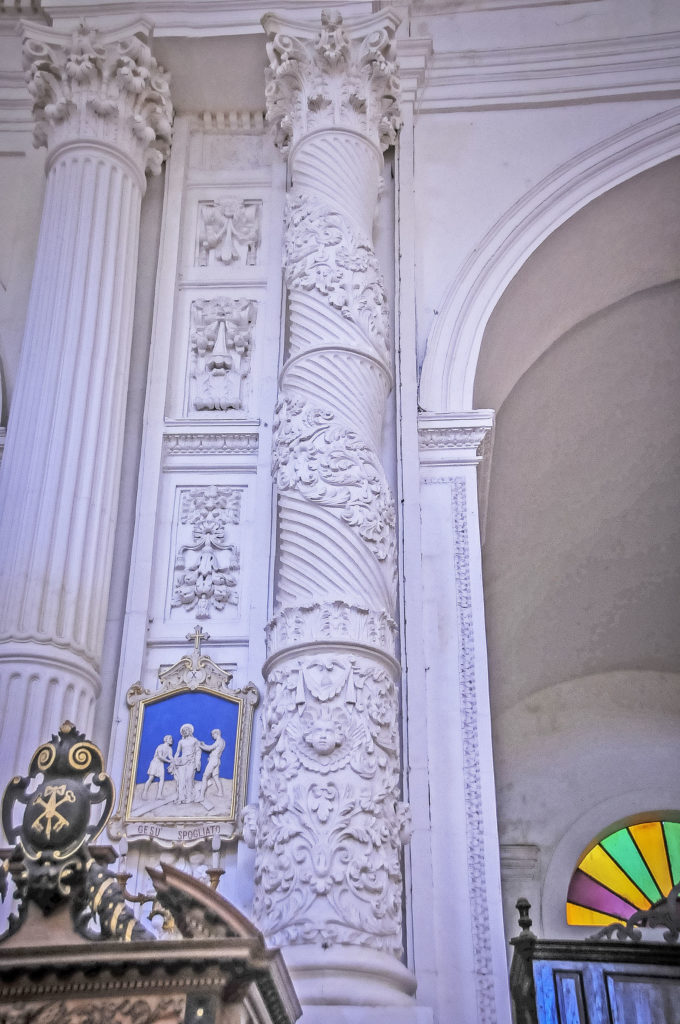 As you walk through the side naves of the church you will realise that the columns placed between the altars are made of different materials: some are marble, some are finished with stucco, some are fluted, some are smooth and some are Solomonic.
As you walk through the side naves of the church you will realise that the columns placed between the altars are made of different materials: some are marble, some are finished with stucco, some are fluted, some are smooth and some are Solomonic.
The use of different materials and finishes not only generates different reflections of light inside the spaces, but also different perceptions to the touch, relating to porosity, smoothness, roughness and temperature.
 Located just a few metres from the church is the oldest chocolate shop on the island.
Located just a few metres from the church is the oldest chocolate shop on the island.
The original chocolate recipe is from Aztec, the land of origin of cocoa beans, and was imported by the Spanish in the early 16th century.
In Modica, the chocolate shop was opened in 1880 by Francesco Bonajuto and produces the famous chocolate according to the ancient 18th-century recipe of “cold” processing.
A visit here will satisfy your taste buds!
On the feast of the Madonna Vasa, the statue of the Madonna meets the statue of the Risen Christ at the foot of the steps of the Cathedral of San Pietro.
On Easter, between sacred performances and music, a rather scenic and sacred moment is celebrated and enjoyed by the community.